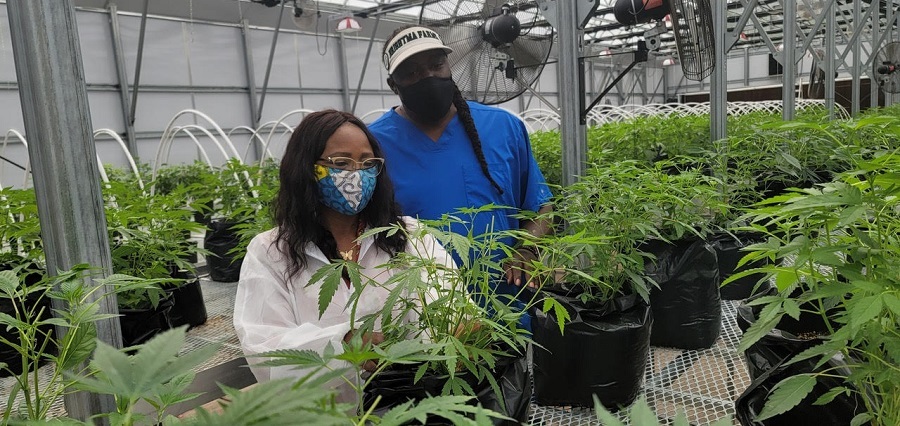Concerns about climate change, spiking energy prices, and declining sales figures have brought renewed focus to discussions on how the international automotive industry must adapt for a more sustainable future. Meanwhile, industry observers say that hemp products are already playing a large and growing role in the automotive sector’s technological evolution towards sustainability.
Last year, during the 2021 Celebration of Earth Day, President Joe Biden announced initiatives to cut United States greenhouse gas emissions in half by 2030. “The United States isn’t waiting,” Biden said at the time. As part of his remarks, Biden mentioned the importance of the initiatives as U.S. automakers work on “the next generation of electric vehicles.”
Rapidly Shifting Gears
The U.S. auto industry has responded rapidly to the call for more environmentally-friendly vehicles. This past May, Ford delivered the first electric version of its popular F-150 pickup truck to a customer in Michigan. According to Vox.com, Ford plans to invest $25 billion in electric vehicles (EV) through 2025, while General Motors is investing $27 billion by 2025 and has plans to become all-EV by 2035.
Shifting from internal combustion to electric powered vehicles is not the only way that the automotive industry and related businesses are approaching sustainability goals. Hemp industry stakeholders are also looking at the opportunities such initiatives can create for their businesses. On June 1, for example, the Hemp Alliance of Tennessee (HAT) announced it was leading a feasibility study on hemp fiber production in the state. Part of the study, according to a HAT press release, “will include an assessment of the feasibility of hemp fiber production for the Tennessee automobile industry as well as an overall assessment of hemp fiber for the development of the Tennessee economy.”
Research Already Underway on Automotive Applications for Hemp
Carla Bailo is President and CEO at the Michigan-based Center for Automotive Research (CAR), an independent, non-profit organization that works with global automotive industry leaders on issues such as competitiveness and technology advancements. She told Hemp Benchmarks that research and development is already underway within the U.S. auto industry, as well as overseas, regarding the use of hemp fibers and plastics in automotive interiors.
“Ford is doing some class-leading research,” she said. “They’re actually implementing [hemp fiber] in their products. Also, there’s some work being done by Faurecia [a French global automotive parts manufacturer and supplier] and a lot of the European companies. They are really looking at sustainable options, even stronger than the U.S. automakers right now.”
Weight as a Primary Factor
Bailo said one of the auto sector’s primary motives in researching the use of hemp products is the industry’s current emphasis on reducing the weight of its vehicles. “An electric vehicle increases the weight of the car by at least 500 pounds,” Bailo noted. She said some of the key areas of weight reduction under scrutiny by the industry involve car seats, instrument panels, brackets, and other vehicle parts, as well as some lightweight polymer alternatives to side impact panels on doors and sound-absorbing substances that do not use petroleum-based materials.
Srikanth Pilla is a professor of automotive engineering at Clemson University’s College of Engineering, Computing and Applied Sciences. He is also the Founding Director of the university’s Composites Center. Hemp fiber products, Pilla told Hemp Benchmarks, are being considered as an alternative to fiberglass in auto parts.

While fiberglass has more tensile strength than hemp fibers, he said, hemp fiber compares well in other categories. “When we’re looking at fiberglass, the density of that is about 2.5 grams per cc (cubic centimeter),” Pila said. “But hemp is less than one gram per cc. So from a purely density standpoint, hemp beats fiberglass. Based on the amount of hemp that is used, you can see a more leaner and greener option for [auto] components.”
Opportunity in the Science
Harold Singletary is CEO and founder of BrightMa Farms, a vertically-integrated hemp products firm and licensed nursery in Charleson, South Carolina that also specializes in genetic breeding and ag-tech research. He told Hemp Benchmarks his company is currently working with Ford – as well as Toyota, Volvo, and BMW – to adapt hemp fibers and plastic for the injection molding processes used by the auto industry’s “tier one” providers: the companies that provide parts to the auto sector’s Original Equipment Manufacturers (OEMs).
“The opportunity is definitely in the science,” Singletary said. “We’ve been able to show that [hemp] can be a substitute, is less toxic, and has great tensile strength.” He added that hemp fibers also help with the auto industry’s Life Cycle Assessment (LCA), a decades-old study of how consumer products potentially impact the environment during their life cycle.
Regarding hemp itself, “the capacity of the plant is unlimited,” Singletary said. “Breeding allows us to remove lignin [the rigid, woody organic compound in hemp] and the moisture content in processing. We’re able to [produce] the car’s door-locking mechanism, using hemp fiber … [as well as] anything in the interior – the seat, the carpet, anything plastic in the car.”
The biggest challenge for the use of hemp plastics in cars, according to Singletary, is creating the infrastructure needed to generate the massive amounts of processed hemp products the automotive industry will need in its large-scale vehicle production lines. Compared to Europe, which has not “demonized” hemp, “we’re building the plane around us as we’re moving,” he laughed. “Infrastructure is a critical component, that’s the challenge. It will take large capital and I think the [federal] government should play a part in that. So do farmers.”

Harold Singletary is CEO and Founder of BrightMa Farms 
BrightMa employees monitor hemp growth 
BrightMa employees prepare hemp plants for transplanting
Adapting the Auto Industry’s Supply Chain and Approach to Parts
For her part, Carla Bailo at the Center for Automotive Research thinks major changes must first happen in how automotive vehicles and their parts are fabricated, as the need to replace non-recyclable materials grows. “We need to be talking about that because, in the future, there’s going to be a lot of people that are not going to be able to afford cars,” she said.
Bailo continued: “People’s expectations are changing. It’s like their cell phones; people expect to use the product and then, as soon as something better comes, they’re going to upgrade. So we’re going to have a lot of cars that are going to need to be refurbished or redone. We need to be looking at how we can make the entire [vehicle] much more recyclable – which means changing the way we think about the design and the materials going in, in the beginning.”
Srikanth Pilla at Clemson believes the automotive industry’s supply chain can readily adapt to the introduction of hemp products on a wide scale, as auto sector OEMs work with hemp fiber producers. Pilla projects that, over the next several years, “automotive companies will start putting some hemp fiber components in their mass-produced vehicles. Will it go into a 200,000-volume production vehicle? I don’t know, but maybe they will start with a lower-production vehicle. And then, if it works out, they start transitioning it to other high-volume models.”
Related Articles:
- Hemp Fiber & Grain Stakeholders Push for THC “Exemption” (June 1, 2022)
- The Huge Potential of Hemp Plastic Compounds (January 12, 2022)
- What Obstacles Must the Hemp Fiber Industry Overcome to Develop and Expand? (October 20, 2021)


